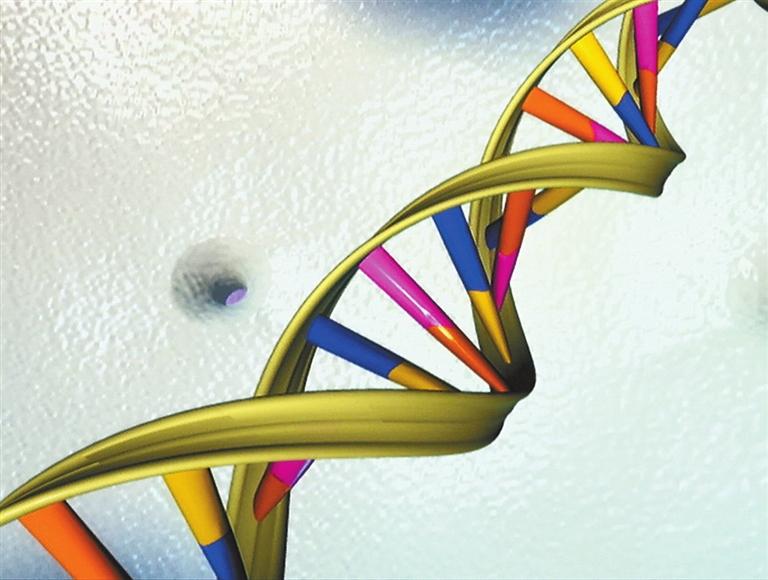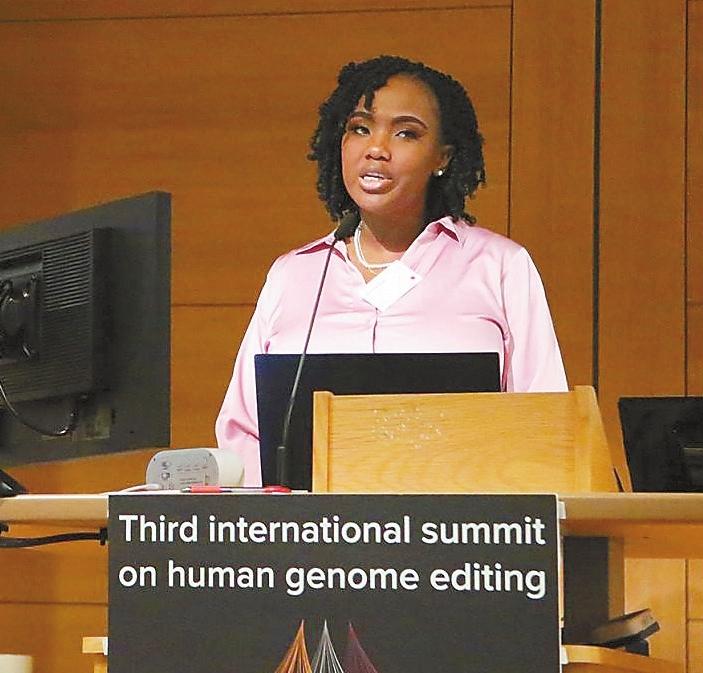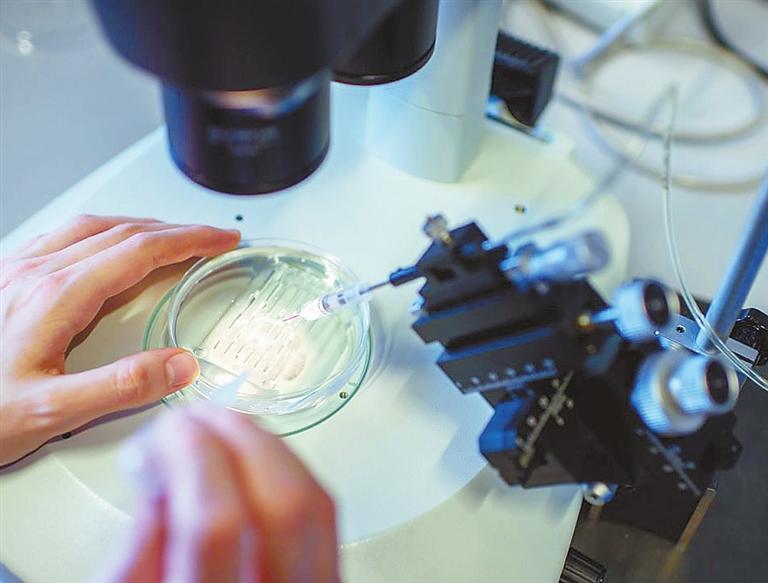


FOR most of her life, Victoria Gray, a 37-year-old mother of four from Mississippi, the U.S., had experienced excruciating bouts of pain. Born with the blood disorder sickle cell disease, lengthy hospital stays and debilitating fatigue disrupted her childhood, forcing her to quit pursuing a college nursing degree and take potent and addictive painkillers. “The pain I would feel in my body was like being struck by lightning and hit by a freight train all at once,” she said March 6 at the Third International Summit on Human Genome Editing in London. In 2019, she received an experimental treatment for the inherited disease that used the gene-editing technique CRISPR-Cas9, which allowed doctors to make precise changes to her DNA. While the procedure itself was grueling and took seven to eight months to fully recover from, she said it has transformed her life. “The feeling is amazing. I feel that I’m cured now,” Gray said. “I no longer have to face the battles that I faced on a day-to-day basis. I came from having to have an in-home caregiver to help me take baths, clean my house and care for my children. Now I do all those things on my own.” She’s now able to enjoy a life she once felt was passing her by. She holds down a full-time job as a Walmart cashier, and she’s able to attend her children’s football games and cheerleading events and enjoy family outings. Gray shared her experience with doctors, scientists, patient advocates and bioethicists who gathered in London for the human genome editing summit, at which participants reported on advances made in the field and debated the thorny ethical issues posed by the cutting-edge technology. CRISPR-Cas9 and related techniques have made a major impact on biomedical research, and two scientists behind the tool — Emmanuelle Charpentier and Jennifer A. Doudna — won a Nobel prize for their work in 2020. “Clinical trial results demonstrate that CRISPR is safe, and it’s effective for treating and curing human disease — an extraordinary advance given the technology is only 10 years old,” Doudna said at the conference in a video address. “It’s important with a powerful technology like this to grapple with the challenges of responsible use.” In addition to the sickle cell trial that includes Gray, clinical trials are also underway to test the safety of gene editing in treating several other conditions, including a related blood disorder called beta thalassemia; leber congenital amaurosis, which is a form of inherited childhood blindness; blood cancers such as leukemia and lymphoma; type 1 diabetes; and HIV/AIDS. DNA acts as a instruction manual for life on our planet, and CRISPR-Cas9 can target sites in plant and animal cells using guide RNA to get the Cas9 enzyme to a more precise spot on a strand of DNA. This allows scientists to change DNA by knocking out a particular gene or inserting new genetic material at a predetermined site in the strand. People with sickle cell disease have abnormal hemoglobin in red blood cells that can cause them to get hard and sticky, clogging blood flow in small vessels. In the trial that Gray was part of, doctors increased the production of a different kind of hemoglobin, known as fetal hemoglobin, which makes it harder for cells to sickle and stick together. The process is invasive and involves removing premature cells from the bone marrow and modifying them — by using CRISPR-Cas9 in the lab — to eventually produce fetal hemoglobin. The patient has to undergo a round of chemotherapy before receiving the gene-edited cells to ensure the body doesn’t reject them. The conference also shed light on new, more sophisticated gene-editing techniques, such as prime editing and base editing, which recently was used to modify immune cells and successfully treat a teen with treatment-resistant leukemia. These next generation techniques will allow humans “to have some say in the sequence of our genomes so we are no longer so beholden to the misspellings in our DNA,” said David Liu, the Richard Merkin professor and director of the Merkin Institute of Transformative Technologies in Healthcare at the Broad Institute of MIT and Harvard University. The gene therapy trials currently underway involve treating people who were born with a certain disease or condition by altering non-reproductive cells in what’s known as somatic gene editing. The next frontier — many would say red line — is heritable gene editing: altering the genetic material in human sperm, eggs or embryos so that it can be safely passed onto the next generation. The goal would be to prevent babies from inheriting genetic diseases. “It’s a very different set of ethical trade-offs when you’re not a treating disease in an existing individual but you’re in fact preventing an individual yet to be born from suffering from a disease. That’s a very different set of considerations,” said George Daley, Caroline Shields Walker Professor of Medicine and dean of the faculty of medicine at Harvard Medical School. In a statement released at the end of the conference, the organizers said “heritable human genome editing remains unacceptable at this time.” They added that public discussion and policy debates should continue and were important for resolving whether this technology should be used. The hope offered by gene therapy is creating fresh ethical storms — primarily over who gets access to such treatments. The therapy Gray received, which is expected to soon receive regulatory approval, is likely to cost more than US$2 million per person, putting it out of reach for many who need it. “If we want to be serious about equitable access to these kinds of therapies, we have to start talking early on about ways to develop them and make them available and make them cost effective and sustainable,” said Alta Charo, the Warren P. Knowles Professor Emerita of Law and Bioethics at the University of Wisconsin at Madison. (SD-Agencies) | 
